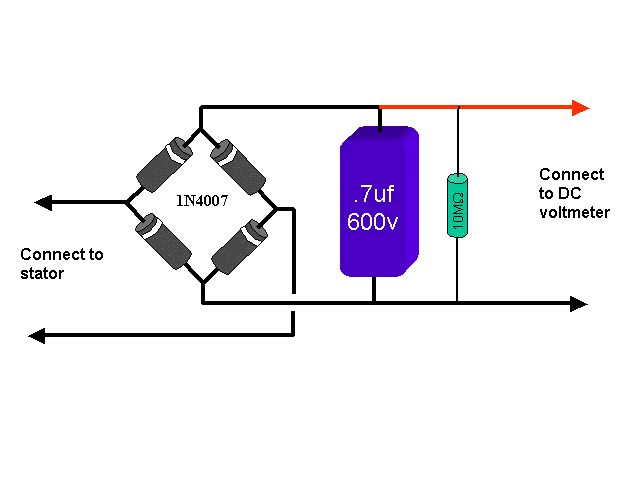Re: volt testing power packs....
Nope, no pulse...it's smooth DC voltage. Basically the CD power pack is a very simple circuit. The A/C voltage from the charge coil (under the flywheel) is rectified into DC voltage and stored in the capacitor. The B+ side of the capacitor is really connected to the whole power head (that's why you place your Red meter TO the power head). The black wire coming from the power pack that gets connected to the power packs mounting bolt is not a 'ground' as is commonly thought. It's the DC output of the capacitor. OMC is using the whole power head as a common 'conductor' to get the voltage over to the coils. Since the coils are directly mounted to the power head , that's where they get the voltage for the primary coil winding voltage. This makes a good point to be sure the connections , mainly that little black power pack wire and the coil mounting bolts be clean and tight.
The small coil wire, (what i call the 'back side' of the primary coil winding) gets momentarily connected to the negative side of the cap thru the SCR ,and the coil fires.
The cap. is storing approx. 150-225 volts DC. The whole motor (and aluminum boat !) is charged to this same voltage. Placing the Black meter lead on the ungrounded lead of the kill switch (negative side of the cap) allows you to read the caps. charged voltage. This meter reading is DC voltage.
You can connect your Red meter lead to the small wire on the coils too. This is the 'back side' of the coils primary lead and should show the caps B+ voltage.
Now , this explains how the kill button works. One side of the kill button is connected to the power head ( remember this isn't 'ground', it's 150-225 volts DC from the positive side of the cap). The other kill button wire goes into the power pack , and is connected to the negative side of the capacitor. Since the kill button is Open Circuit ( not internally connected) , the cap can charge up and power the coils. When you push the kill button, the cap is directly shorted ( both ends connected) . Since the cap can't store it's charge with both ends shorted, there's no voltage...thus, no spark to the coils....and the motor dies.
Sorry for the long winded explaination...:^
"Is this a reliable measurement" , you bet ! You can measure the output of the charge coil, and ignition capacitor. Of course, watching these voltages, and their fluctuations, is easier with a scope.






















